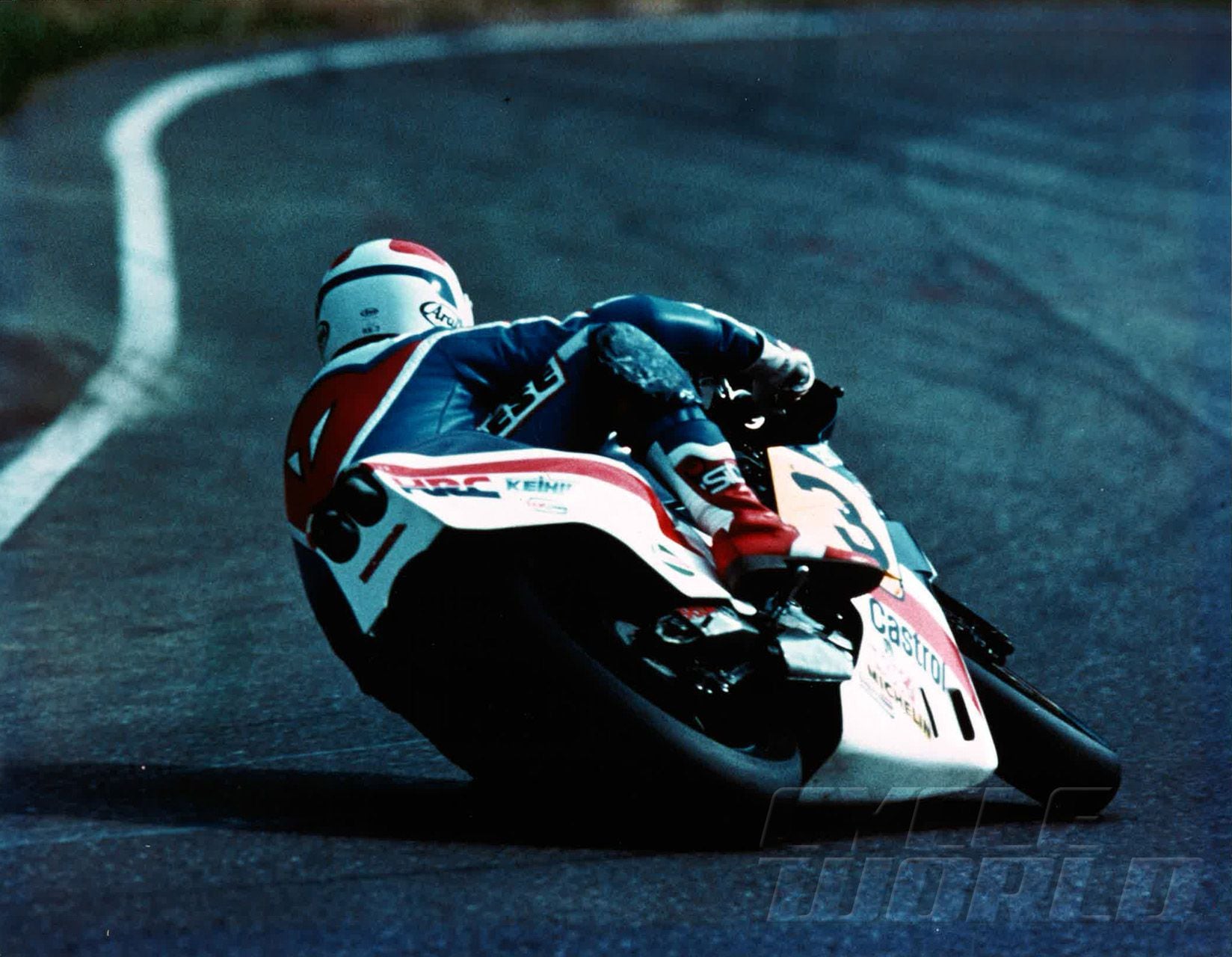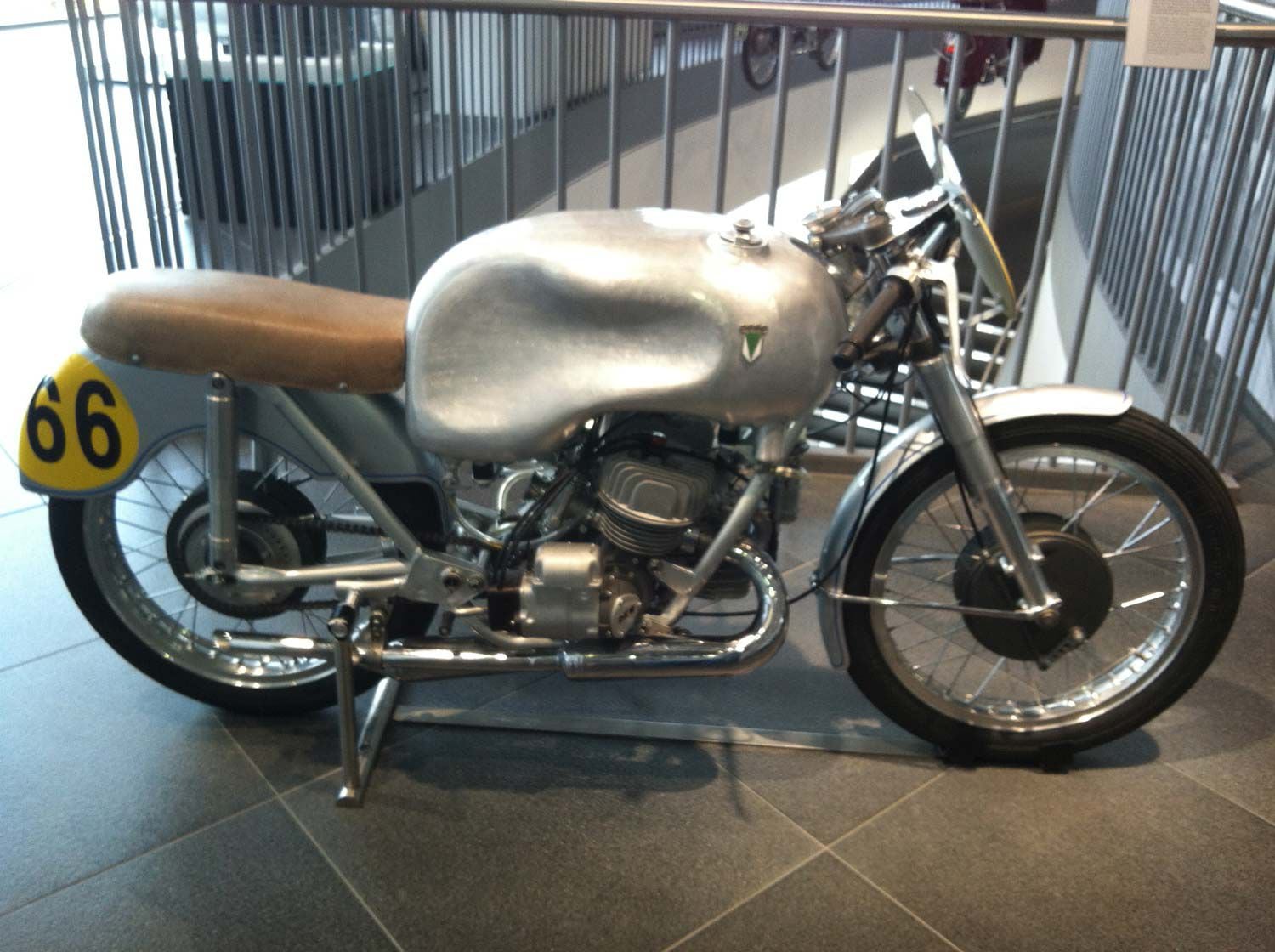
One of my greatest pleasures is when I finally understand some conundrum that has festered in the cold case file for too long. Back in the 1980s, standing at the fence on the approach to Daytona’s turn 2 (aka the “International Horseshoe,” a 180-degree right-hander), I tried to make sense out of what I was seeing. I’ve written about this before, but what it came down to was that decent 250 riders began acceleration over there, and World Champion Anton Mang began acceleration sooner than that, but I could hear Freddie Spencer’s engine start to pull just as he neared full lean on corner entry.
Brave, braver, bravest? That’s the easy answer that tells us nothing, gives zero insight. That one rolled around in my head like the grain of sand that irritates the tender gray flesh of the oyster. Where was the sense in this?
What if the riding I’d seen in turn 2 wasn’t good, better, best? What if, instead of just being the earliest to throttle up, Freddie had no choice—entering the turn as fast as he did, he had to apply throttle or he’d lose the front end and fall down? And then I remembered a Dunlop graph in a 1950s book, a graph of tire grip versus applied load. It rose on a slope, softened, hooked over, and started back down. That graph implied that a rider could overload his/her front tire during corner entry, to the point that it reached “saturation”—being forced into the texture of the pavement until there was no more rubber-gripping contact area to be created by load. And if the tire at that point began to let go—”losing the front”—the conventional wisdom was that nothing could bring it back. You were done.
But what if, using just a bit of throttle, you transferred some of that excess load back off the front tire? Then its footprint rubber should rise back up the falling part of the curve, back to the “hilltop” of peak grip! And then I thought, “This has to be the origin of the old dirt-track saying, ‘When in doubt, gas it.’”
Years later Freddie and I had a conversation in which he said there’d been two dirt tracks in Kentucky that were more football-shaped than they were oval, “So you could kinda play with it while you were turning.” That’s how he’d discovered how to save the front with a whiff of throttle.
Once he’d found it worked on dirt, he naturally wondered if it would work on pavement. Soon he would try it. It did work, and how.
Recently I felt that same irritation as I read through the few references I have to the postwar two-stroke roadracers built by DKW in Germany. In 1951, nearly every builder of racing two-strokes was using the classic “blooey pipe”—an exhaust header pipe with an open megaphone on the end of it. Very loud, and not very satisfactory, because every builder knew that if you raised the exhaust port to enable the engine rev up past 7,500 rpm, the extra exhaust area that was still exposed as the rising piston closed the transfer ports would just let more fresh charge escape through the exhaust. That limited a 125 cylinder to 8 to 10 hp at about 7,500 rpm.
At that point DKW engineer Erich Wolf asked himself what would happen if he put some kind of reflecting wall or cone on the open end of the megaphone. With the right dimensions, that wall or cone should send a positive reflection of the exhaust pulse back to the cylinder, arriving there just in time to stop or reverse the loss of fresh charge through the open port.
Yet even with that tremendous invention applied to its three-cylinder 350cc, DKW was never, ever able to beat Guzzi’s one-cylinder 350 four-stroke. DKW factory rider August Hobl came close a couple of times, occasionally trading the lead with Guzzi’s Bill Lomas, but Guzzi won every 350 title from 1953 to ’57 inclusive. Hobl did, however, win German championships.
As with Freddie’s mysterious ability to get around corners, I found myself puzzling over how a low-revving 7,800-rpm four-stroke single could do the deed over DKW’s 9,500-rpm triple, which had the help of Wolf’s new baffled exhaust pipes.
Then I realized what must have happened. To take advantage of the new pipe, Wolf would have had to raise the triple’s exhaust ports, releasing the exhaust earlier in the stroke. This was necessary to blow cylinder pressure down quickly so that fresh charge, being pumped up through the transfer ports from the crankcase, could enter the cylinder, and allowing the engine to operate at higher revs. But releasing the exhaust earlier also meant that the escaping gas, having been less expanded, would be hotter. That hotter gas, rushing to the exhaust port across the piston crown, would have driven piston temperature up, increasing the danger of piston and ring scoring, or even seizure.
Therefore the rate of progress in matching earlier exhaust port timing to the new baffled pipe would have been slowed by the need to find piston alloys with greater hot strength and reduced thermal expansion. It would probably have required improvements to cylinder cooling as well. All that would take time, allowing the highly refined Guzzi four-stroke to continue to make hay in the class.
By the time I got my hands on two-stroke racing equipment in the mid-1960s, Yamaha’s piston and cylinder metallurgy had reached a decent level of reliability. With the Yamaha TD1-C of 1967, the last of the 250 four-strokes in US AMA racing, Harley’s Italian-made Aermacchi single, was driven from the class.
DKW had made its great contribution to two-stroke technology, its so-called “expansion chamber” or baffled exhaust, but it didn’t have time in which to fully develop it. The postwar German motorcycle boom erupted because in a destroyed Germany it was cheaper and quicker to get bikes back into production than cars. But when cars did hit the market, around 1955, Germans bought them instead of bikes. No more roadracing for DKW.







